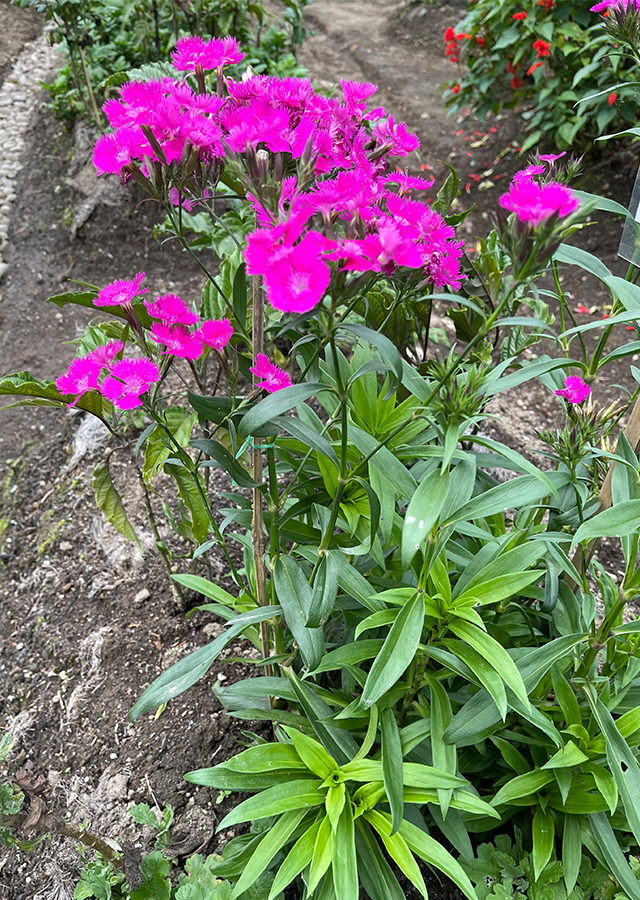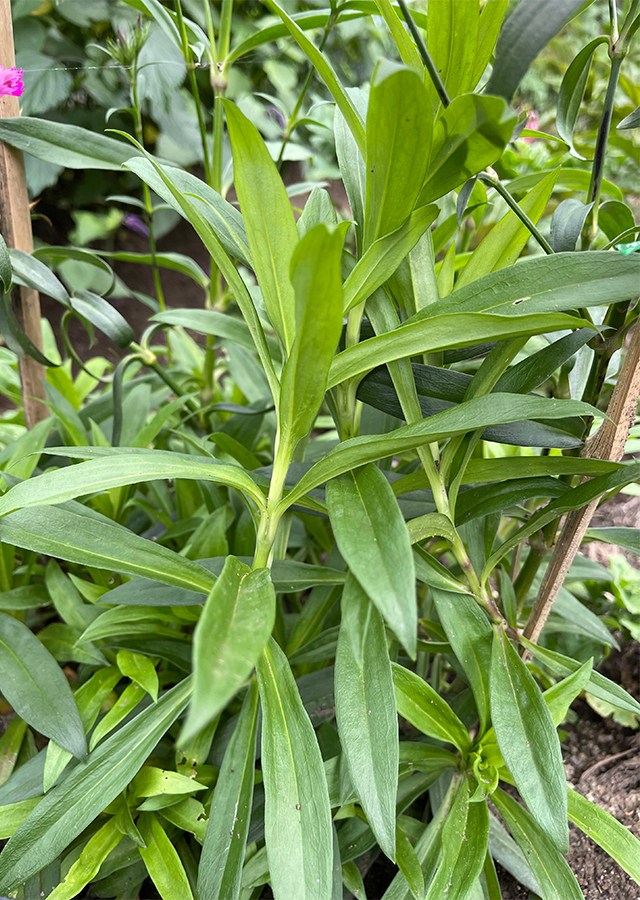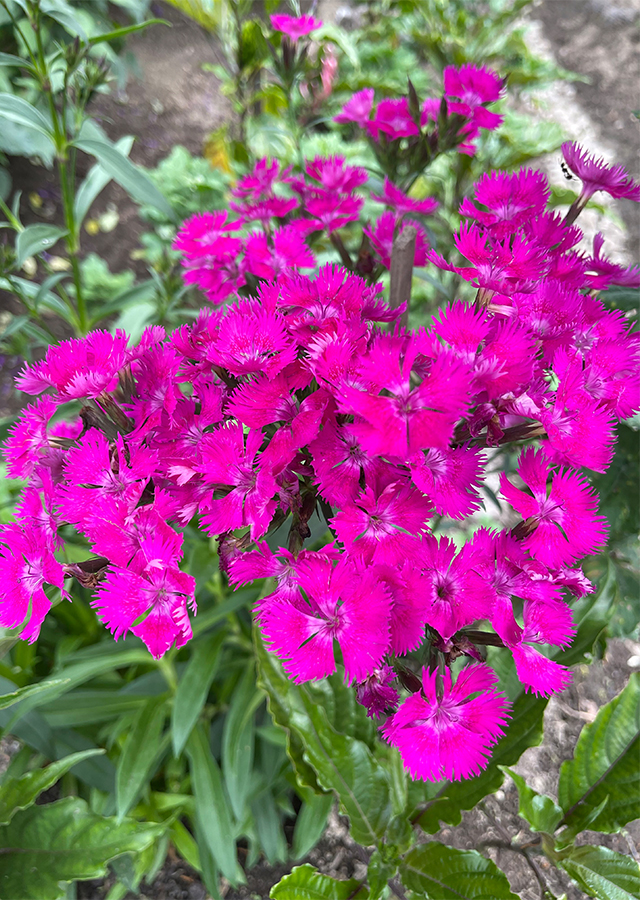Chinese Pink
Dianthus chinensis L.
Caryophyllaceae
Location in our garden
Principal



Synonym
Dianthus altaicus Willd. ex Ledeb
Dianthus amurensis Jacques
Dianthus chinensis f. albiflora Y.N.Lee
Habitus
Herbaceous. A perennial plant that can grow up to 0.70 m tall.
Part Used
Leaves
The Whole Plant
Growing Requirements
Full Sunshine
Drought Resistant
Habitat
Riverbanks
Forest
Mountains
Grassland
Overview
Dianthus chinensis is native to Gansu, Hebei, Heilongjiang, Henan, Jilin, Liaoning, Nei Mongol, Ningxia, Qinghai, Shaanxi, Shandong, Shanxi, and Xinjiang and is naturalized in Southern China, Kazakhstan, Korea, Mongolia, Russia Siberia, Europe. This plant has beautiful and attractive flowers so it is widely planted as an ornamental plant in pots. This plant has also been used for more than 2,000 years in Chinese herbal medicine because it has anthelmintic, antibacterial, antiphlogistic, (diaphoretic) sweating, diuretic, emmenagogue, febrifuge, and hemostatic activity.
Vernacular Names
No information found. Need further search.
Agroecology
Dianthus chinensis prefers fertile, well-drained neutral loam to alkaline soil in sunny positions, but does well in most soils including dry ones.
Morphology
- Stems - erect, branching distally.
- Leaves - linear-lanceolate, 3-5 cm × 2-4 mm, prominent mid-vein, slightly narrowed base, flat or denticular edge, apex tapering.
- Flowers - solitary or several in cymes; pedicle 1-3 cm, bracts 4, ovate, 1/2 length petal length, webbed edge, ciliated, long pointed apex. Cylindrical petals, 1.5-2.5 cm × 0.4-5 mm, striated; teeth lanceolate, measuring 5 mm, ciliated edges, sharp pointed apex. Petals 1.6-1.8 cm; limbs bright red, purple-red, pink, or white, ovate-triangular, 1.3-1.5 cm, mottled throat and loose beard, apex irregularly toothed. The stamens are removed, the anthers are blue. Suboblong ovary. Linear styles.
- Fruits - cylindrical capsule, surrounded by petals, toothed apex 4.
- Seeds - black, spherical in shape.
Cultivation
- Propagated by seeds - seeds usually germinate in 2 - 3 weeks. When they are large enough, plant the seedlings into individual pots. Seeds can also be sown thinly in outdoor nurseries.
- By shoot cuttings - use half-ripe stems.
- By division - larger clumps can be replanted directly into their permanent position, although it is best to plant a smaller clump and grow it in a cool room until it takes root well.
Chemical Constituents
Cyclopentapeptide dianthin I, pseudostellarin A, heterophyllin J, saponins (dianchinensoide A and dianchinensoide B).
Traditional Medicinal Uses
- The whole plant is a bitter tonic herb that stimulates the digestive, urinary and intestinal systems.
- Used internally in the treatment of acute urinary tract infections (especially cystitis), urinary tract stones, constipation and menstrual failure.
- Treat inflammation and swelling of the skin.
- Clears eyesight.
Part Used
Reference Sources
- Royal Botanic Gardens. 2017. Plants of the World Online: Dianthus chinensis L.. https://powo.science.kew.org/taxon/urn:lsid:ipni.org:names:153215-1#descriptions. 05-04-22.
- Useful Temperate Plants Database. 2022. Dianthus chinensis. https://temperate.theferns.info/plant/Dianthus+chinensis. 05-04-22.
- Flora of China. Dianthus chinensis. FOC Vol. 6 Page 104. http://www.efloras.org/florataxon.aspx?flora_id=2&taxon_id=200007038#:~:text=Dianthus%20chinensis%20is%20a%20very,also%20including%20the%20cultivated%20material. 05-04-22.
- Jing Han, Maobo Huang, Zhe Wang, Yuqing Zheng, Guangzhi Zeng, Wenjun He, Ninghua Tan. 2015. Cyclopentapeptides from Dianthus chinensis. Journal of Peptide Science/Volume 21, Issue 7/ p. 550-553.
- Hong Yu Li, Kazuo Koike, Taichi Ohmoto. 1993. Dianchinensoides A and B, Two New Saponins From Dianthus Chinensis. Journal of Natural Product vol. 56, No. 7pp. 1065-1070, July 1993.

